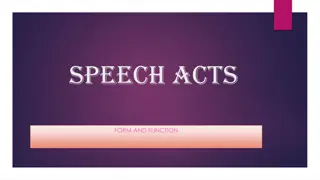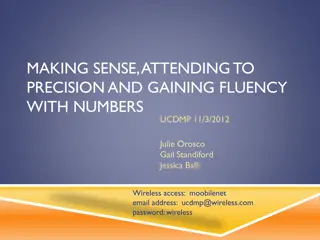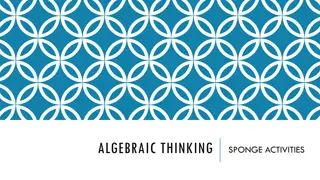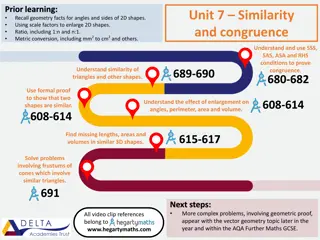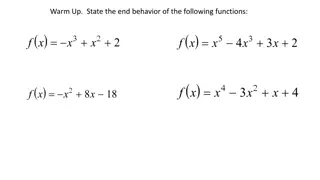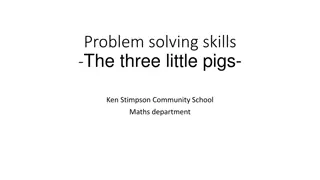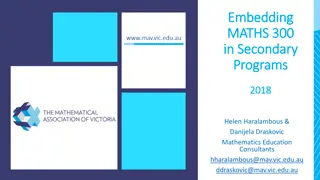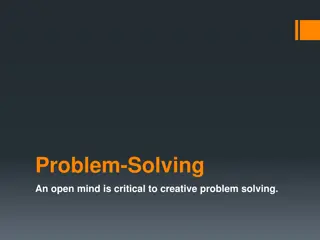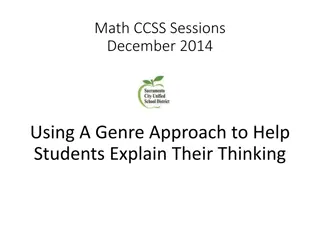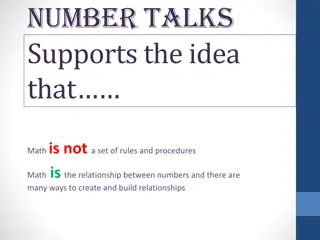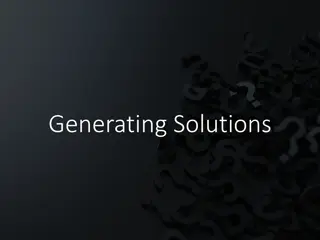Mathematical Modeling through Three Acts: A Guided Problem-Solving Approach
Explore the Three Acts instructional routine designed to prompt mathematical modeling skills. Act 1 focuses on understanding the problem, Act 2 involves planning and solving using a model, and Act 3 centers on interpreting conclusions. Engage in identifying problems, quantities, and relationships to think like mathematicians who analyze real-world situations and make predictions. Reflect on your learning through each act to enhance your mathematical thinking skills.
Download Presentation

Please find below an Image/Link to download the presentation.
The content on the website is provided AS IS for your information and personal use only. It may not be sold, licensed, or shared on other websites without obtaining consent from the author. Download presentation by click this link. If you encounter any issues during the download, it is possible that the publisher has removed the file from their server.
E N D
Presentation Transcript
THREE ACTS An Instructional Routine An Instructional Routine Prompting Mathematical Modeling Prompting Mathematical Modeling
THREE ACTS WHAT WHAT: Practice identifying problems, quantities and relationships. Explore assumptions, create and revise models. WHY WHY: to think like mathematicians , who model to analyze real-world situations, make predictions, and revise their thinking.
THREE ACTS ACT 1: Understand the Problem ACT 1: Understand the Problem ACT 2: Plan & Solve using a Model ACT 2: Plan & Solve using a Model ACT 3: Interpret Conclusions ACT 3: Interpret Conclusions Reflect on learning Reflect on learning
ACT 1 As you look at this video, ask yourself... What do I notice? What do I wonder?
ACT 1 Understand the Problem I noticed ...and wondered . What did you notice and wonder?
ACT 1 Identify the Problem ???
ACT 1 Identify the Problem How many dominos are needed to knock over a skyscraper?
ACT 1 How many dominos are needed to knock over a skyscraper? What s an answer that you are sure is too large? (High) What s an answer that you are sure is too small? (Low) What is your best guess? (Best)
ACT 2 Identify Quantities & Relationships I am interested in the number/amount of because . The relationship between...and...is important because . What quantities are you interested in finding out? Why? What relationships do you think are important? Why?
Identify Quantities & Relationships Share What information would be useful to know? How can this information be found?
ACT 2 Create Model What representation will be helpful to describe the relationship(s) in your model and use it to solve the problem? Algebraic Geometric Graphical Statistical Use a table
Create Model Pair I used to represent Using...helps represent the relationship . I connected...to the mathematics of . My result makes sense because . I assumed .
Interpret Model Share & Study Models We estimated the value to be . We used to model because .... They paid attention to....in the context and connected it to . Their model assumes...
Revise Model Pair Make edits to (ANNOTATE) your original model. Use different colors. Make notes on the new assumptions or information that were included and how that changes the result. Ask yourself: How does the new assumption change my model s result? Are there any other assumptions I want to consider?
ACT 3 Revise & Report Compare your results to the revealed result. Review your model and work. What else do I want to revise or report? My solution is close to (or far from) the revealed result because I considered (or did not consider) . My model can be (or was) improved by thinking about...because . The assumptions that were made were (or were not) useful because .
Reflecting on Learning Paying attention to in a context is helpful because... When creating a model, thinking about...is important because .



